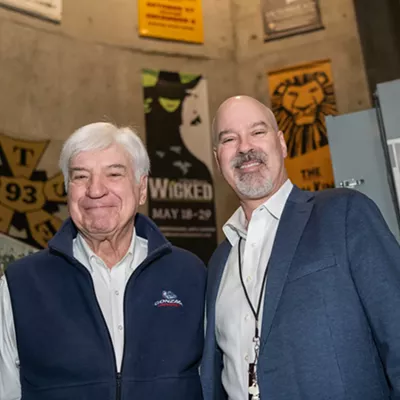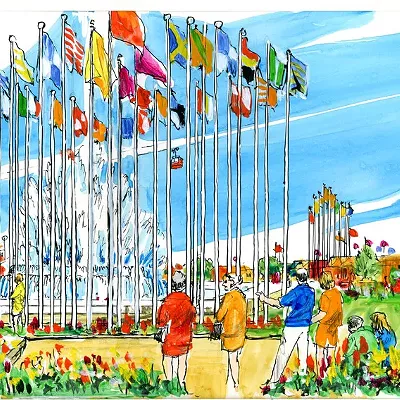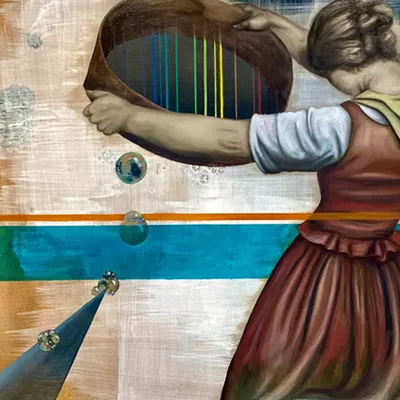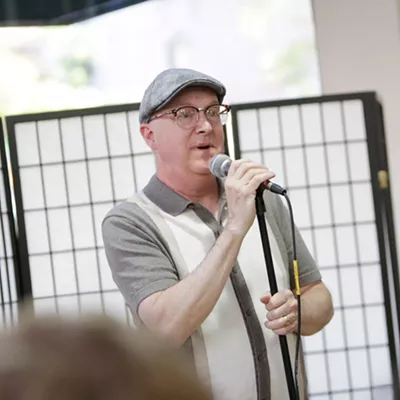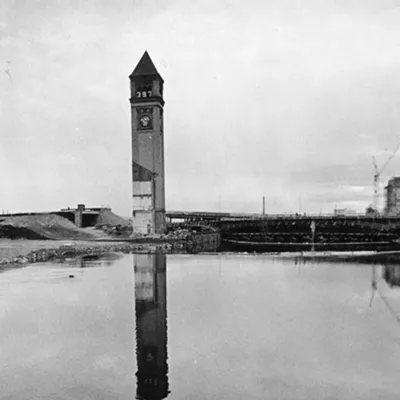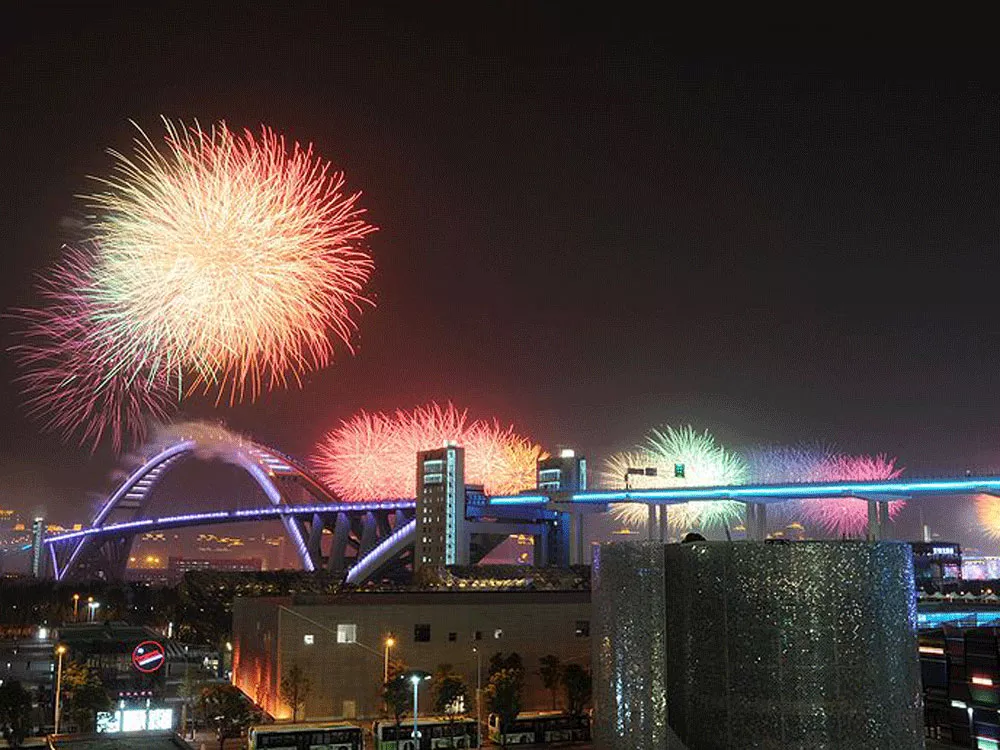
The first thing you notice on the train from the airport into Shanghai is that you are moving at more than 250 miles per hour. You are literally “flying low” on the ultra-modern maglev system that floats the train slightly above the tracks. It’s an amazing experience, and provides a remarkable introduction to a remarkable city and its world’s fair.
My recent trip to Shanghai completed a journey begun at my home in Cheney two years ago. During the summer of 2008, a film crew from China came to Spokane to conduct interviews and to film scenes for an account of Expo ’74. This was one of four film crews Shanghai TV sent to various points on the planet to produce a miniseries on the history of world’s fairs. They visited London, Paris and, yes, Spokane.
The film crew spent several days filming city scenes and interviewing King Cole and several other local dignitaries. Wu Jun, the producer, had come across my book about Expo, The Fair and the Falls, and so his crew came to my house, did an interview and stayed for a barbecue. These journalists from China had not seen much of American life, so this simple get-together made as much of an impression on them as it did on me.
Flash forward to 2010: I had never been west of Hawaii and, after spending several years writing about Spokane’s Expo, I had not seen a world’s fair for many years. It was time to go to China.
With two friends from Seattle, I exited the maglev train, hired a cab to the hotel and took the measure of Shanghai. During the next several days, we traveled by taxi and subway through a city so colossal that it seemed to have no end. Thanks to another friend, Professor Liping Zhu — a Shanghai native who is now a history professor and my colleague at Eastern Washington University — we were guided skillfully through the mazes of old and new Shanghai. Standing on an observation platform about 1,400 feet above the city — the highest of its kind in the world — we learned that a taller building would soon loom over this one.
Later we met Wu Jun and his 10-year-old son, who introduced himself by his English name, “Captain.” Together we went to a world’s fair whose size is staggering — equal to the entirety of the core of downtown Spokane. The fair boasts more than 250 national and corporate pavilions; the lines were as long as eight hours for the most popular pavilions.
Wu Jun is highly talented, but appealingly modest. In a quiet way, he would go to a special entrance to various pavilions, show his credentials, and before long we’d be inside.
One of my favorite pavilions honored the Chinese shipping industry. It was carved out of a former shipbuilding structure — think Spokane’s Steam Plant — and transformed into a beautiful evocation of maritime life. Wu Jun’s father was a ship captain, and he had known this plant in the old days.
I was especially impressed by the Russian Pavilion, which featured hundreds of huge artificial plants in an arrangement reminiscent of the planet Pandora in the movie Avatar. As you walked among the plants, you saw little films on monitors with children describing their various visions for the perfect city of the future. This pavilion hit the theme of the fair: “Better City, Better Life.”
Nearby, the United States’ pavilion had a lot more commercialism and a lot less pizzazz. Some years ago, in a misguided act of legislation, Congress declared that no taxpayers’ money would go to foreign exhibits. The United States almost missed the Shanghai fair entirely; an exhibit was funded at the last moment by commercial sponsors. Inside the pavilion, the audience moved from one theater to another, and I was beginning to feel as if America had gone to the Expo Olympics and come away with only a bronze.
But our final film was special. It was an account of a little girl who set out to build a park on a vacant city lot. Slowly she persuaded others to help her. The music, story and pacing were great. At the end, young Captain looked at me, smiled and held up both thumbs.
Having visited Spokane’s fair 30-some years ago and having spent several years writing a book about it, I couldn’t help but compare the two fairs. At some level, that’s like comparing an NFL team with a small-town high school team. And yet, here’s the thing:
As I walked through Shanghai’s Expo 2010, absorbed at one moment by the fair and at the next by the playful exchanges between the affectionate father, Wu Jun, and his bouyant son, I felt this was all somehow familiar. Both China’s and Spokane’s fair celebrated environmental values; both were suffused with a spirit of goodwill; both transformed their cities.
And consider this: Wu Jun visited many American fair sites with his TV crew. I asked him which of all those American locales was his favorite.
“I’m often asked that,” he said. “And I always say, ‘Spokane.’” ♦
Bill Youngs is a professor at Eastern Washington University and author of The Fair and the Falls, the definitive history of Spokane’s World’s Fair.




